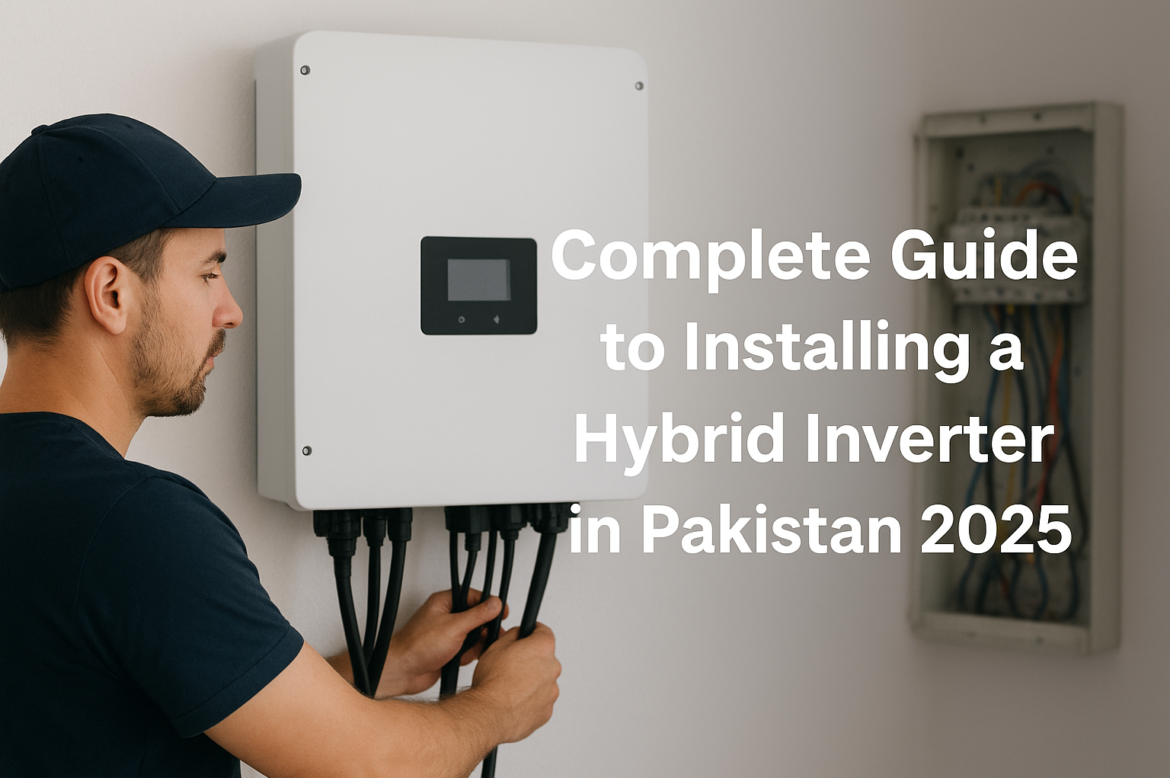In 2025, demand for hybrid inverters in Pakistan has skyrocketed due to increasing electricity costs and frequent load-shedding. A hybrid inverter allows you to store solar energy in batteries and use it when needed, ensuring uninterrupted power. This guide will walk you through every step — from preparation to installation — following the latest industry standards.
What is a Hybrid Inverter and Why is it Popular in Pakistan?
A hybrid inverter combines the functionality of a solar inverter and a battery inverter, allowing seamless switching between solar power, battery storage, and the grid.
Benefits of a hybrid inverter in Pakistan include:
-
Continuous power during load-shedding
-
Reduced reliance on the national grid
-
Lower electricity bills
-
Better utilization of solar energy
With rising energy prices in 2025, installing a hybrid inverter in Pakistan is one of the most cost-effective solutions for homes and businesses.
Things to Consider Before Installing a Hybrid Inverter
Before starting the installation process, you should consider:
-
Energy Needs Assessment – Calculate your household or business’s daily electricity usage.
-
Battery Compatibility – Choose batteries that work efficiently with your hybrid inverter.
-
Location – Install in a cool, dry place away from direct sunlight and moisture.
-
Wiring and Safety Compliance – Follow Pakistan Electric Code standards to avoid hazards.
-
Professional vs. DIY – While DIY is possible, professional installation ensures safety and compliance.
Step-by-Step Guide to Installing a Hybrid Inverter in Pakistan
1. Site Preparation
Select a location with proper ventilation. Keep the inverter away from flammable materials and ensure it’s easily accessible for maintenance.
2. Mounting the Hybrid Inverter
-
Use a sturdy wall or mounting rack.
-
Maintain clearance for air circulation.
3. Connecting the Solar Panels
-
Follow the manufacturer’s wiring diagram.
-
Use MC4 connectors for secure connections.
4. Battery Connection
-
Connect batteries according to voltage requirements.
-
Ensure correct polarity to avoid damage.
5. Grid Connection
-
Link the inverter to the main distribution board.
-
Install an appropriate circuit breaker for safety.
6. System Configuration
-
Use the inverter’s display or mobile app to set charging modes.
-
Configure backup priority if you want certain appliances to run during outages.
7. Testing the System
-
Turn on the inverter and monitor output.
-
Check for any warning indicators.
Maintenance Tips for Hybrid Inverters
To ensure your hybrid inverter in Pakistan runs efficiently in 2025:
-
Clean dust and debris monthly.
-
Inspect wiring for wear and tear.
-
Update firmware for better performance.
-
Service the system annually by a professional.
Cost of Installing a Hybrid Inverter in Pakistan (2025)
The price depends on capacity, brand, and battery type. On average:
-
5kW Hybrid Inverter: PKR 250,000 – 350,000
-
10kW Hybrid Inverter: PKR 500,000 – 700,000
Additional costs may include wiring, installation labor, and battery upgrades.
FAQs
Q1: Can I install a hybrid inverter myself?
Yes, but professional installation is recommended for safety and compliance with local electrical standards.
Q2: How long does a hybrid inverter last?
Typically 8–12 years, depending on usage and maintenance.
Q3: Can a hybrid inverter work without batteries?
Yes, but adding batteries maximizes benefits during load-shedding.
Q4: What is the warranty period for hybrid inverters in Pakistan?
Most brands offer 2–5 years warranty, extendable for a fee.
Q5: Does installing a hybrid inverter reduce my electricity bill?
Yes, it allows you to use stored solar power instead of relying on the grid.
Conclusion
Installing a hybrid inverter in Pakistan in 2025 is a smart investment for uninterrupted, cost-effective energy. By following proper installation steps, ensuring regular maintenance, and using quality components, you can enjoy reliable power for years to come. Whether for residential or commercial use, hybrid inverters are the future of energy independence in Pakistan.


